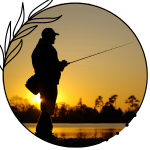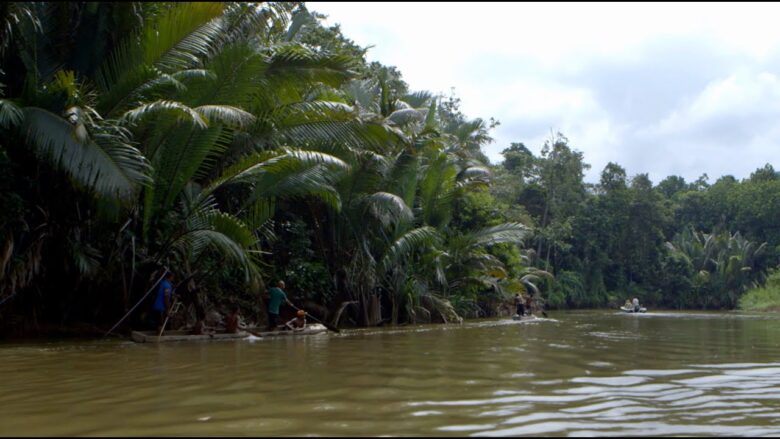To understand the importance of preserving nature and fish in sport fishing, we will dive into the sub-sections: “The Importance of Preserving Nature” and “The Importance of Preserving Fish.” These sections shed light on the crucial role of conservation efforts in maintaining the ecological balance and sustaining the sport fishing experience for future generations.
The Importance of Preserving Nature and Fish
Preserving nature and fish is super important in sport fishing. It keeps fish populations healthy and ecosystems balanced. Protecting habitats helps us safeguard breeding and feeding areas for fish species. We can also enjoy the beauty of untouched landscapes while fishing.
Fish also help keep our planet healthy. They regulate aquatic ecosystems, control algae growth, filter water, and show us environmental changes. Without enough fish, these delicate ecosystems could suffer.
Preserving nature means more than just catch and release. We should use barbless hooks, practice catch-and-release safely, and follow size and bag limits. These rules protect fish from overfishing and let future generations enjoy fishing too.
One story shows how crucial it is to preserve nature and fish. An angler fished in a river full of trout. Over time, pollution from nearby industries ruined the river. Trout populations plummeted due to habitat degradation and bad water.
But local conservation groups and anglers cleaned up the river. They did river clean-ups, educated people, and stopped pollution. After a few years, the river was full of life. Trout populations grew thanks to better water quality and healthier habitats. This is proof of what happens when we preserve nature and fish. Who needs a trophy wife when you can catch and release trophy fish?
Catch and Release Techniques
To ensure the preservation of nature and fish, learn the catch and release techniques in sport fishing. Selecting the right fishing gear for catch and release, along with proper handling and unhooking methods, are the key sub-sections that offer effective solutions.
Selecting the Right Fishing Gear for Catch and Release
When selecting the right fishing gear for catch and release, it’s essential to consider the goal: letting the fish go unharmed. Gear should minimize stress and injury.
A table of ideal fishing gear has four columns:
| Rod and Reel | Fishing Line | Hooks | Lures/Baits |
|---|---|---|---|
| Get a lightweight rod with a sensitive tip and a smooth drag reel. | Opt for braided or monofilament line with high strength and low visibility. | Use barbless hooks for easier removal and less damage to the fish. | Choose artificial lures or baits that won’t injure the fish. |
Handling techniques are also important. Wet your hands before touching the fish. Don’t squeeze or mishandle them, and never touch their gills. To improve its chances of survival, properly release the fish back into the water.
Circle hooks can increase survival rates. Studies by the Florida Fish and Wildlife Conservation Commission show they reduce deep hooking in many species of sportfish.
If you’ve ever been ghosted, you have experience with catch and release techniques!
Proper Handling and Unhooking Methods
Here’s a 6-step guide to proper handling and unhooking methods:
- Wet your hands or wear gloves before handling the fish. Prevent slime from being removed from their scales, which can lead to infection.
- Use a rubberized landing net to lift the fish out of the water. Avoid rough mesh nets that can harm fins or gills.
- Keep the fish in water as much as possible while removing the hook. Support its body with both hands, without excessive pressure.
- Use long-nosed pliers or hemostats to remove the hook from the fish’s mouth. Cut the line close if deeply hooked.
- Release the fish gently by holding it upright in an area with good water flow. Let it regain strength before swimming away.
- Minimize impact on the fish by using barbless hooks or pinching down barbs for easier hook removal and less injury.
Time is key for fish survival after release. Educate yourself about different types of fish and their specific needs for catch and release. A study by the Fisheries Research Institute shows proper handling and unhooking methods can increase chances of survival upon release.
Sustainable Bait and Lure Choices
To fish sustainably with minimal impact on nature and fish, make thoughtful choices in your bait and lure selection. By using biodegradable and eco-friendly bait, and opting for sustainable lures, you can significantly contribute to the preservation of our aquatic ecosystems. Let’s explore these two sub-sections to uncover the solutions they offer for sustainable sport fishing.
Using Biodegradable and Eco-Friendly Bait
Biodegradable and eco-friendly bait are essential for sustainable fishing practices. They minimize environmental impact while still allowing anglers to enjoy their pastime.
Here’s a table showing the benefits of these lures:
| Bait Type | Material | Benefits |
|---|---|---|
| Biodegradable | Natural substances (such as soy or algae-based) |
Reduces water pollution |
| Eco-friendly | Recycled materials (such as rubber or plastic-free) |
Decreases waste in landfills |
These options provide advantages for both the angler and the environment. Biodegradable baits made from natural substances, like soy or algae-based materials, reduce water pollution. Eco-friendly baits, made from recycled materials such as rubber or plastic-free alternatives, help reduce waste in landfills.
Plus, biodegradable and eco-friendly bait also preserves marine life and ecosystems. Unlike conventional baits that take years to break down, these sustainable choices degrade rapidly without leaving behind any harmful residues.
A fellow angler recently shared an inspiring story about switching to biodegradable bait. He witnessed a decrease in littering at his favourite fishing spot and an increase in the number of fish caught. This shows that small changes can have a huge impact on both our enjoyment of fishing and the sustainability of our environment.
By choosing biodegradable and eco-friendly bait, anglers can actively work to preserve aquatic ecosystems. Let’s make sustainable choices to create a balanced relationship between our passion for fishing and the wellbeing of nature.
Opting for Sustainable Lures
Go green with your fishing – select sustainable lures! Here are three key factors to consider:
- Materials: Choose lures from renewable or recycled sources such as biodegradable plastics or natural fibers.
- Lead-free: Pick lures that are free of toxic lead, which can contaminate water and harm wildlife.
- Durability: Invest in quality lures that will last, reducing replacements and waste.
Furthermore, research local regulations on lure materials and use barbless hooks to avoid hurting the fish.
Be part of the conservation effort – opt for sustainable lures! By choosing eco-friendly options, we contribute to the planet’s future and ensure future generations can enjoy fishing. Don’t miss out on this chance to fish responsibly and help protect our world.
Fishing in Designated Areas
To ensure responsible fishing in designated areas, understanding fishing regulations and licenses, along with showing respect for protected areas and wildlife, are essential. By adhering to these guidelines and demonstrating a commitment to preserving nature and fish, you can enjoy sport fishing while minimizing negative impacts on the environment.
Understanding Fishing Regulations and Licenses
Fishing in designated areas is like dating – you must stick to the boundaries! To ensure you don’t get caught, you must know the rules. This includes Catch Limit, Size Limits, Seasonal Closures, Restricted Areas and a Fishing License. It’s important to check local regulations, since they may vary depending on the location and type of fish. Did you know fishing regulations have been around for over 2000 years? The first known set was created by the Assyrians in ancient Mesopotamia!
Respect for Protected Areas and Wildlife
Be aware of how our actions affect protected areas and wildlife. Understand the regulations of each area – including any restrictions on certain species or fishing methods.
Stay away from sensitive habitats like coral reefs or nesting sites. Plus, use non-toxic bait and properly dispose of fishing lines and other waste. This prevents pollution.
Learn about local flora and fauna. This helps us make informed decisions when encountering species while fishing.
Remember, respecting protected areas and wildlife not only enhances the fishing experience, but also preserves these habitats for future generations. Let’s be responsible anglers!
Responsible Fishing Practices
To enhance your responsible fishing practices, explore sport fishing techniques that preserve nature and fish. Taking Only What You Need and Fishing Techniques that Minimize Harm are the key sub-sections to be discussed.
Taking Only What You Need
Ensure sustainability by taking only what you need when fishing. Consider the following points:
- Target select species: Focus on catching specific fish rather than many.
- Observe catch limits: Familiarize yourself with local regulations.
- Release undersized fish: Respect size restrictions and release them quickly.
- Avoid waste: Use sustainable fishing gear and handle caught fish with care.
Remember that responsible fishing isn’t just about taking what you need. It’s also about being aware of our impact on marine environments. Stay informed about changes and advancements to keep improving your practices.
Fishing Techniques that Minimize Harm
Sustainable fishing practices are vital for keeping marine ecosystems healthy and fish populations alive. Three techniques to do this include:
- Selective Fishing: This involves using nets or hooks of a certain size to catch just the desired species. This helps protect other species and biodiversity.
- Habitat Management: To protect habitats, fisheries use measures to avoid damaging coral reefs or seafloor habitats. This ensures the health of marine ecosystems.
- Catch and Release: Anglers use barbless hooks and wet hands to reduce stress and injury when catching fish. Then, they release the fish quickly back into the water. This makes it possible to keep fishing sustainably.
We must remember that responsible fishing also requires proper waste disposal to prevent ocean pollution. MSC studies have found that certified sustainable fisheries have improved the environment over time.
Learning about responsible fishing requires effort, patience, and dedication, just like catching a big fish!
Education and Awareness
To promote conservation and environmental responsibility in sport fishing, and to actively participate in citizen science programs, this section emphasizes education and awareness. It highlights the importance of preserving nature and fish, and explores techniques that align with these principles.
Promoting Conservation and Environmental Responsibility
Conservation and environmental responsibility are critical for a sustainable future. We can make a positive difference by spreading awareness and educating people about these issues. Let’s explore the importance of promoting conservation and environmental responsibility.
Preserving biodiversity is vital. It maintains the balance of ecosystems and supports life on Earth. Sustainable resource usage preserves resources for future generations. Furthermore, reducing pollution levels mitigates climate change and improves public health.
To boost our efforts, here are some ideas:
- Educational campaigns to inform different age groups about conservation and environmental responsibility.
- Campaign for policy changes to promote sustainability such as renewable energy, waste reduction, and habitat protection.
- Collaborate with governments, NGOs, businesses, and individuals to achieve shared goals.
It’s easy to be a scientist – pick up trash and join citizen science programs!
Participating in Citizen Science Programs
Citizen science programs offer people the opportunity to actively contribute to scientific research. They get to work with experts and learn from them, increasing their knowledge across various scientific disciplines. Through collaboration with people from different backgrounds, gaps can be bridged and inclusivity is promoted.
Participants also become more aware of environmental issues and are motivated to be advocates for positive change. Citizen science programs encourage lifelong learning and stimulate curiosity. It’s an invaluable chance to develop critical thinking skills and gain experiential insights into scientific processes.
Don’t miss out on the opportunity to make a real difference. Get involved today and help advance scientific research, protect the environment, and expand your own understanding of the world. Your participation matters!
Conclusion: The Future of Sport Fishing and Conservation
Sport fishing evolves constantly. Preserving nature and protecting fish populations is essential for its future. Sustainable techniques and conservation efforts can ensure the health of aquatic ecosystems.
We must be proactive to secure the future of sport fishing and conservation. Anglers should consider the environment when fishing. Practices like catch and release, biodegradable fishing gear, and restoring fish habitats are important.
Education is key in shaping the future of sport fishing and conservation. We must teach anglers about sustainable practices and local regulations. Collaboration between anglers, scientists, and policymakers is key in creating management strategies that help fish populations survive.
The Great Salmon Collapse of 2009 showed us the importance of conservation in sport fishing. Wild salmon populations along the West Coast decreased due to destruction and overfishing. This led to more habitat restoration projects and stricter fishing regulations. Thanks to these efforts, salmon populations are recovering, proving that conservation measures make a difference.





